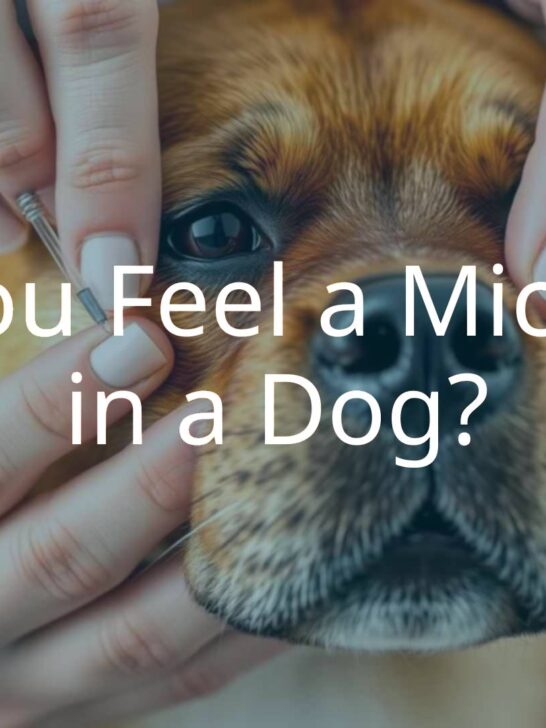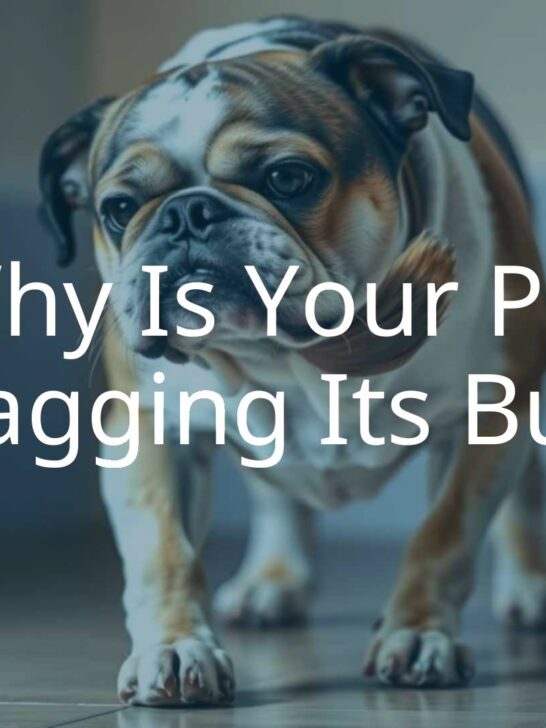A Complete Guide to Spaying and Neutering your German Shepherd (+ Pros and Cons)
If you hear a group of people speaking about their dogs, then you will notice that spaying and neutering are spoken about as if they are common practice.
A lot of people just accept that this is what you should do, but is spaying or neutering your dog really the best thing for them?
There are lots of benefits to spaying or neutering your dog, including the fact that it stops hormone-related behavioral issues.
These behavioral issues tend to include the urge to run away, and aggressive tendencies. So, it is clear to see why so many people are tempted into getting their dog done.
However, there are some risks to neutering, and there are lots of things that you should know before you get this procedure done.
Including the fact, that your dog should never be neutered if it is under the age of 1 as it can lead to health issues.
In this complete guide, we’ll be taking a look at exactly what neutering and spaying are, and also at the pros and cons of these procedures.
So, if you are considering getting your German Shepherd spayed or neutered, read this guide to help you decide.

Why would you get your German Shepherd Dog Neutered?
First, let’s take a look at why you might choose to get your dog neutered. We have already mentioned that this procedure is linked with lots of improvements in terms of behavioral issues.
But, this isn’t the only benefit that can be had from getting your dog neutered. So, let’s take a look at some other reasons why people choose to get this procedure done.
Well, one of the main reasons why a lot of people get their dog spayed or neutered is because it is recommended. This recommendation is the main reason why this procedure is common practice.
The majority of rescue groups and animal shelters advocate for neutering, as does the Humane Society, and this is why so many people do it.
There is an excess population of dogs in the world, and this is why so many of them end up in shelters. So, you should neuter your dog to help reduce the excess population.
Neutering your dog is also a good idea if you do not want to breed them. You may think that you can control your dog, and prevent it from breeding without neutering it.
However, when a female dog is in heat, or a male dog (that isn’t neutered) smells a dog that is in heat, there really is no controlling them.
This is how accidental litters happen. So, neutering your dog is the most effective way to avoid any unwanted litters from happening.
These unwanted litters tend to end up in rescue centers, which links back to our first point.
As you can see, neutering is mainly such a common procedure out of a sense of responsibility.
Yes, it can help prevent some hormone-related behavioral issues, but above all else, it helps reduce the number of unwanted dogs that are looking for homes. But what exactly is the neutering process?
Let’s take a look.
What are Spaying and Neutering?
Even though spaying and neutering are common procedures, a lot of pet owners do not know exactly what happens during the operation.
Of course, we have a general idea of what happens, but veterinarians don’t really go into too much detail about what this procedure entails.
Although these terms are often used interchangeably, they are actually two different procedures.
Even though they both have the same purpose, spaying is the term used when the procedure is conducted on a female dog, and neutering is used when the dog is male.
So, with that in mind, let’s take a look at exactly what the spaying and neutering process is.
Spaying
Spaying is the term used for the procedure that prevents a female dog (and other female animals) from being able to reproduce.
There are a few variations on this procedure, some involve tying the tubes that connect the ovaries to the uterus, and others include simply removing the ovaries, leaving the uterus intact.
However, the most common variation of the procedure involves the removal of all of your dog’s reproductive system. Ovaries and uterus included.
This procedure can be done in two ways. This means that it can be done either laparoscopically or through open surgery.
Laparoscopic surgery is quite a lot more complex than open surgery, this is why open surgery is a much more common route. Both procedures involve your dog being put under general anesthetic.
Open surgery is the traditional form of surgery, and it involves an incision being made near your dog’s belly, large enough for the surgeon to be able to see what they are doing.
Once the surgeon can see inside your dog, they will then cut through the ligaments that are protecting the ovaries and uterus.
This will allow them to get a clear view of where they will be performing the main part of the surgery.
Once they have access to the reproductive system, the surgeon then ties off the necessary arteries and removes the uterus and both ovaries.
After that, checks will be completed to rule out any internal bleeding, and the ligaments will be closed up with internal sutures. Then the skin where the incision was made will be closed up using sutures, glue, or staples.
When the procedure is complete, your dog will be brought back around and given painkillers.
In most cases, you will be able to pick your dog up from the vets the same day that the procedure has been completed. They can then recover at home.
Laparoscopic surgery is a fairly recent development, famed because it is minimally invasive.
It is for this reason that it is so popular for laparoscopic surgeries to be completed on humans, as there is minimal scarring. But, this procedure is also now being used on dogs.
This surgery only requires a small incision, and a camera is used to allow the surgeon to see what they are doing.
Once this camera is inserted into your dog’s abdomen, carbon dioxide gas is also then added to the abdomen to cause it to inflate. This creates the necessary space to allow the surgeon to do their job.
Using smaller instruments, the surgeon then grasps the ovaries and removes them. They then use a cauterizing instrument to seal the incisions, removing the need for sutures.
Your dog is then closed up and brought back around.
Laparoscopic surgery is more complex, but it is also a lot better for your dog. The necessary cuts for laparoscopic surgery are much smaller, so your dog will experience a lot less pain throughout.
Their recovery time will also be a lot quicker. This is why lots of people are now choosing to get this procedure done rather than open surgery.

Neutering
In comparison to spaying, neutering is a much easier procedure. This is why you will often find that it is much cheaper to get your male dog neutered than it is to get your female dog spayed.
Neutering takes a fraction of the time that spaying does, and as it is a lot less invasive, the recovery time is also much quicker. So, let’s take a look at what this procedure entails.
In short, neutering is the process of your dog’s testicles being removed. As your dog’s testicles are (usually) located outside their body, this is much less invasive than neutering.
However, if your dog has undescended testicles, then this process might be a little more complex. But this condition is rare, so most of the time, neutering is simple.
For this procedure, your dog will be put under general anesthesia. Once they are unconscious, the testicles are then located and isolated, then a small incision is made at the front of their location.
This incision is just the perfect size for the testicles to pass through. After the incision is made, the testicles are then pulled through the incision one by one.
Once the surgeon has access to the testicles, the blood supply is then clamped or tied off. Then the sperm supply will be clamped or tied off.
After both supplies are restricted, the testicles are then cut off one at a time. When the testicles have both been removed, the bottom and top layer of your dog’s skin is closed up using sutures and the procedure is complete.
Most of the time, vets will use dissolving sutures, so you won’t even need to return to the surgery after the procedure has been completed.
You will usually be able to pick up your dog on the day of the procedure, and then they will be well on their way to recovery within the next week.
Do I have to Neuter my German Shepherd?
So far we’ve spoken about neutering quite generally, but now let’s take a look at this procedure in relation to the German Shepherd breed.
There is nothing that says that you have to neuter your German Shepherd, but most owners do get this procedure done. So, let’s take a look at why.
There are, of course, links to resolving behavioral issues in your dog which are caused by hormones.
This is quite a selling point for most German Shepherd owners as these dogs are big, heavy, and strong, so if they begin to show aggression, this can be quite scary.
But it isn’t only hormone-related behavioral issues that are resolved by neutering.
The neutering process is also linked with reducing the risks of a lot of genetic diseases and conditions.
In particular, it completely removes the risk of testicular, ovarian, and uterine cancer as these organs are no longer there.
In female dogs, neutering your dog early on in their life has also been linked with a massively reduced risk of breast cancer.
So, if you have no intention of breeding your dog, then neutering them could be good for their health.
Additionally, neutering is linked with a reduced risk of perineal hernias and prostate disease, and it also removes the risk of passing down bad genetics, so it is definitely something to think about.
Neutering your dog also greatly reduces the risk of accidents and injuries. As we mentioned earlier, it is almost impossible to control an intact dog that smells a female dog that is in heat.
Likewise, controlling a female dog that is in heat also isn’t an easy job.
If an intact dog smells a female that is in heat, there is no stopping him from trying to get to her.
Male dogs can often lose their mind when they smell a dog that is in heat, and they will do anything to reach her. This involves breaking out of enclosures, jumping fences, and running across busy roads.
So, if you want to avoid this from happening, get your dog neutered.

Male dogs, in particular, are also linked to some negative behaviors that can be removed once they have been neutered.
‘Marking’ is what happens when a male dog tries to scent places as their own, unfortunately, they mark these areas by peeing on them.
Dog pee stinks, and it is a smell that can linger for a long time, especially with the amount of pee that German Shepherds produce.
But, neutered dogs do not mark places, at least not indoors, so neutering your dog would also prevent this from happening.
There are some other benefits of having your dog neutered, including reduced risk of them wandering off or having unwanted pregnancies.
But, from an ethical perspective, the main reason why you should get your dog neutered is to reduce the overpopulation of dogs on the planet.
We’ve mentioned this before, but it is something that we will say time and time again, because it is so important.
All over the world, there are more than 200 million unwanted dogs either living in animal shelters or living stray.
A lot of these shelters do not have a ‘no kill’ policy, and so a lot of these dogs will lose their lives simply because nobody can give them a home.
There are plenty of ‘no kill’ shelters, but they are overpopulated and simply cannot save every dog. So, if you get your dog neutered, you will be giving these dogs a chance of being saved.
Is Spaying or Neutering Painful?
The procedure of spaying or neutering your dog is by no means a peaceful experience, but it definitely isn’t painful.
Your dog will not be conscious for the procedure as general anesthesia is given to them, and when they wake up this anesthetic will help dull any pain.
Additionally, once they awake from the procedure they will be given an injection to reduce the pain, ensuring that they will feel absolutely no pain for the first 12 hours.
This gives their body a head start to begin healing.
In most cases, your vet will also prescribe a painkiller to give to your dog after the procedure. If your dog is going to feel any pain, it will only be for the first day or two after the procedure has been completed.
So, this painkiller will dull any pain caused by the operation.
Painkillers aren’t always prescribed, it will depend on how your dog is behaving.
It is more common for female dogs to experience pain after they have been spayed as they have a lot more healing to do, but painkillers will help remove this pain.
The majority of the time, your dog will not experience pain after the surgery. They will likely be groggy on the day that you bring them home as the anesthesia wears off, and they may be a little quiet for a day or two.
But, they will quickly bounce back. In fact, some cats will bounce back almost immediately after their surgery.
So, this procedure will cause your dog a small amount of pain, but it is minimal and definitely worth it when compared to the possible health conditions that can develop if you don’t neuter them.

Will Spaying or Neutering harm my German Shepherd?
So far, we’ve only really focused on the benefits of neutering your German Shepherd.
It is evident that there are lots of pros to this procedure, but it wouldn’t be fair for us to ignore the potential negatives of this procedure. So, let’s take a look at them.
But before we go any further, it is important to note that all procedures have potential negatives attached to them. As do the majority of medications. So you should bear this in mind.
It is also important to note that most of the negatives associated with neutering your German Shepherd are linked to the age at which the procedure is done.
One of the most common risks associated with neutering your German Shepherd is an increased chance of joint problems.
This is based on a study by the University of California that found that German Shepherds that are spayed or neutered before the age of 1 are three times more likely to develop joint problems.
The study used a fairly large sample of almost 1,200 German Shepherds and followed these dogs throughout their entire lives.
The study lasted for 14 years and found that male German Shepherds are more likely to suffer from joint problems when neutered before the age of 1 than female dogs.
But, both have an increased risk when compared to intact dogs.
But remember, this is only for dogs that are neutered before the age of 1, so if this puts you off, you should simply delay getting your dog done.
A lot of people believe that this issue is caused by the dog not getting enough hormones before it is neutered, so it makes their joints weaker and more prone to problems.
As they are a large breed, German Shepherds are not fully grown until they are about 18 months old. So, to avoid this issue, you could delay neutering or spaying your dog until they pass this age.
Neutering and Testicular Implants
To some people, this might seem like a strange concern, but lots of dog owners worry about how losing their testicles might impact their dog.
For this reason, testicular implants were created, or ‘neuticles’ as they are sometimes known. Some people worry that male dogs might be emotionally impacted by the loss of their testicles.
If you are worried about this affecting your dog, you might choose to give them testicular implants.
These implants aren’t cheap, and for this reason, it is arguable that they exist more for the owner than the dog.
Most dogs aren’t phased by the loss of their testicles as they don’t really do much, but a lot of owners struggle with the loss of this ‘masculine feature.
If you are phased by your dog’s lack of testicles and want to get implants for them, then this will cost you around $500 on top of the cost of the neutering surgery.
The neuticles are made using silicone and look just like regular testicles, so once they are in, you won’t be able to notice the difference.
How Much Does it Cost?
Now that we’ve covered almost everything that you need to know about neutering, let’s start taking a look at costs. Please note that the cost of this surgery is influenced by a lot of different factors.
So, let’s take a look at how much you should expect to pay to get your dog spayed or neutered.
Spaying
As we said earlier, spaying is more expensive than neutering simply because it is a much more complex procedure. This will influence the cost of spaying your dog, as will several other factors.
So, let’s take a look at how much you should expect to pay to get your dog spayed.
At the Humane Society or a shelter, spaying will cost between $50-150. This is the more affordable option for those that are struggling financially, but this procedure isn’t widely available to most people.
You are much more likely to visit a private veterinarian, where you should expect to spend between $150-350 on the procedure.
This cost will be influenced by a lot of different things. This will include whether your dog undergoes open or laparoscopic surgery, the location where you live, the vets you attend, and lots more.
It will also be influenced by the breed of your dog, the size of your dog, and their current health situation.
As German Shepherds are a large breed, you should expect to spend more to spay your dog due to the amount of anesthetic that will need to be given to your dog to knock them out for the surgery.
But, generally speaking, you should not expect to spend any more than $350 on the surgery. If you are struggling financially then it is best to contact the Humane Society or a local shelter as they may be able to help you out.
These places know that spaying is incredibly important, so they may be able to offer you the surgery at a reduced cost.

Neutering
Getting your dog neutered tends to be a much cheaper procedure.
This is because the procedure is a lot less complex, and takes up a lot less time in a vet’s schedule, so they can get more procedures done during that day.
But, neutering still isn’t a cheap procedure, so let’s have a look at how much you should expect to pay.
Neutering can cost as little as $35, but it can be as expensive as $300 depending on different factors.
Private veterinarians will charge more, but if you are struggling financially you should contact the ASPCA, a local shelter, or the Humane Society to discuss cheaper options.
Again, neutering your German Shepherd will be more expensive than the procedure to neuter a smaller dog, simply due to the cost of anesthesia. But, other factors may increase the cost.
These include your location, the age of your dog, how complex the procedure is (i.e., if your dog has undescended testicles), and if your dog requires additional pain medication.
You may also be charged extra if you want to get pre-anesthetic blood work done.
But, you should not expect to spend more than $300 on getting your dog neutered, and you should only expect to spend this much if your dog has any health issues that could increase the risk.
Remember, if you opt for testicular implants, then these will cost you roughly $500 on top of the cost of surgery.
What about the Risks of Anesthetics?
For any surgery, your dog will be put under general anesthetic, and neutering/spaying is no different.
This will mean that your dog is in a very deep sleep throughout the procedure, totally unconscious, and unable to feel or tell what is going on around them.
Heavy sedation is essential for surgeries to go smoothly. But there are some risks associated with anesthesia, especially if it is not administered properly, so let’s take a look at these potential risks.
Every year, 1 in 1,000 dogs that are put under anesthesia do not wake up when the surgery is complete.
This is partly influenced by the risk of anesthesia, but it is more commonly influenced by practitioners making mistakes, or not using the anesthesia correctly.
This is why it is incredibly important that you speak to your veterinarian about the process before you hand your dog over to them.
This is also why it is important to build a good relationship with your veterinarian to ensure that you can trust them with your dog’s life.
To help decide if your veterinarian can be trusted to complete this surgery on your dog, you should ask them all the following questions:
- What are the common complications of this procedure for German Shepherds?
- Does my dog have any pre-existing conditions that could put them at risk when put under anesthesia?
- Which of my dog’s physiological functions will be monitored throughout the surgery?
- What is the exact process of the procedure that you will be completing on my dog?
- Will you describe the process of anesthesia that my dog will undergo?
- Will an RVT (Registered Veterinary Technician) or CVT (Certified Veterinary Technician) be present to monitor my dog while they are under anesthesia?
- What steps should I take to make my dog’s recovery as stress-free as possible?
You might feel like you are nagging by asking these questions, but it is important to get as much information as possible before the procedure is completed.
A good veterinarian will understand your concerns and will give honest and clear answers to help ease your worry.
Neither neutering nor spaying is a risky procedure, they are both routine operations, but it is still best to get as much information as possible before your dog is put under anesthesia.

Alternative Options
We mentioned earlier that neutering and spaying aren’t for everyone. After all, it is your choice to neuter your dog, and if after reading this you think the cons outweigh the pros, then that is okay.
You may also be unable to get your dog neutered or spayed due to medical reasons. So, if you can’t or don’t want to get your dog neutered, here are some alternative methods you can use to avoid unwanted litters.
Sterilization
If your main concern about neutering/spaying is the removal of your dog’s organs, then you might find that sterilization is a better option for you.
We mentioned this briefly earlier on when we were discussing spaying, but let’s take a deeper look at what sterilization means for your German Shepherd.
Sterilization has the same effect as neutering/spaying, but it does it without needing to remove any of your dog’s organs.
The procedure is fairly similar to sterilization in humans, and it removes the risk of reproduction without disrupting the flow of hormones through your dog’s body.
For male dogs, they would undergo a vasectomy. This preserves the testicles and allows them to keep pumping testosterone into your dog’s body, but it prevents them from being able to produce.
If you know what a human vasectomy is, then a dog vasectomy is essentially the same thing.
For female dogs, the process is a little different as they undergo something called a ‘modified spay’. This operation involves the removal of the uterus while leaving the ovaries intact.
This procedure sounds complex, but it is actually a lot less invasive than a regular spay, and it is also a much shorter operation, meaning your dog will be under anesthesia for less time.
Both of these procedures also have no negative side effects.
So, if you are put off of neutering due to the University of California study, or because you don’t want your dog to lose their testicles/ovaries, then this could be the best procedure for your dog.
Responsible Ownership
If you prefer that your dog does not undergo any surgery, then responsible ownership is the other option that you have. This sounds easy, but it is a lot more difficult than you might expect.
This is mainly why so many people opt to get their dog neutered/spayed instead.
Responsible Ownership requires you to exercise additional precautions to prevent your dog from reproducing.
These include keeping your female dog confined in a small and secure area during the 2 times a year that she is in heat.
This sounds simple, but a female dog in heat will do anything to get to an intact male, so it is a lot harder than you expect.
In male dogs, responsible ownership will mean that you never let your dog roam freely.
It is also important that you monitor your dog when at home, and have high fences and security to ensure that your dog cannot escape to get to females in heat. So, this might seem easy, but it definitely isn’t.
Frequently Asked Questions
Before we wrap this up, let’s take a look at some FAQs that people have about neutering or spaying their German Shepherds.
Will my German Shepherd calm down once neutered?
Yes, generally speaking, neutering does calm down dogs. However, it can often take a couple of months for these effects to make themselves known.
Assuming that your dog has no behavioral problems, then they should begin to calm down and become docile within 3 months of being neutered.
But, in some cases, it will still take a couple of years for your German Shepherd to completely calm down.
Related reading: Will Neutering My German Shepherd Calm Him Down?
Will neutering stop my German Shepherd from being aggressive?
If your German Shepherd is showing aggressive tendencies, then neutering them could help solve these. However, this is dependent on their aggressiveness being caused by hormones.
The process of neutering significantly reduces the amount of testosterone in your dog’s bloodstream, and it is this hormone that causes aggressiveness.
So, if too much testosterone was making your German Shepherd aggressive, then neutering should solve this.
Can neutering be reversed?
Unfortunately, no, neither neutering nor spaying can be reversed. Once the testicles or ovaries/uterus have been removed, there really is no going back.
This is why it is incredibly important that you weigh up the pros and cons before you get this procedure done.
Summary
In short, this has been a complete guide to spaying and neutering your German Shepherd, with lots of information, as well as pros and cons included.
So, if you are considering getting your German Shepherd neutered, read this guide to look at both sides of the argument, and help you decide if this procedure is right for you and, more importantly, your dog.



















